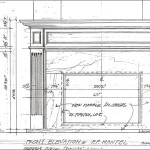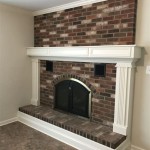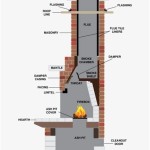Wood Fireplace Mantels: A Guide to Style and Functionality
A wood fireplace mantel serves a dual purpose, offering both aesthetic appeal and practical functionality. Beyond its decorative role, it provides a dedicated space for displaying cherished items, showcasing artwork, and even housing essential tools for maintaining a roaring fire. The choice of a mantel can significantly impact the overall ambiance and character of a room, reflecting personal style and complementing existing decor. This article delves into the various aspects of wood fireplace mantels, exploring their different styles, materials, and considerations for installation.
Styles and Designs
Wood fireplace mantels are available in a wide array of styles, ranging from classic and traditional to modern and contemporary. Choosing the right style depends on the architectural design of the house, the fireplace itself, and the desired aesthetic for the room. Here are some popular styles:
- Traditional: Characterized by ornate carvings, intricate details, and often featuring a heavy, substantial appearance. Common materials include mahogany, cherry, and oak.
- Mission: Emphasizing clean lines, simplicity, and functionality. Often constructed with sturdy, unadorned wood like oak or walnut, featuring straight lines and square shapes.
- Rustic: Evoking a sense of warmth and natural elements, often featuring rough-hewn wood, reclaimed timbers, and distressed finishes. They embrace imperfections and emphasize the beauty of natural textures.
- Modern: Characterized by minimalist designs, sleek lines, and often incorporating unconventional materials like metal or glass alongside wood. They prioritize clean lines, simplicity, and functionality.
- Contemporary: Embracing modern aesthetics with a focus on clean lines, geometric shapes, and a blend of materials like wood, metal, and stone. They often feature a sleek, sophisticated look that complements contemporary interiors.
Materials and Finishes
The choice of wood for a fireplace mantel is crucial, not only for its aesthetic appeal but also for its durability and resistance to heat. Common wood types include:
- Oak: A sturdy, long-lasting choice known for its beautiful grain patterns and warm tones. Its durability makes it suitable for frequent use and exposure to heat.
- Cherry: Renowned for its rich, reddish-brown hue and intricate grain patterns. It possesses good durability but may require more maintenance compared to oak.
- Maple: Offers a light, creamy color with an appealing grain pattern. It is generally a harder wood, making it durable and resistant to scratches and dents.
- Walnut: Known for its dark, rich tones and captivating grain patterns. It is a strong and durable wood, suitable for both rustic and contemporary designs.
- Reclaimed Wood: Adds a unique character and eco-conscious touch, providing a story through its salvaged history. It can offer a wide range of textures and colors, depending on the origin of the wood.
Beyond the wood type, various finishes can enhance the appearance and provide additional protection. These include:
- Staining: Enhances the natural color of the wood while offering protection against moisture and UV damage.
- Painting: Allows customization with a wide range of colors and finishes, from traditional hues to bold statement shades.
- Varnishing or Lacquering: Creates a protective layer that enhances the natural beauty of the wood and adds a shine.
- Distressing: Adds a rustic and vintage aesthetic, creating a weathered and worn look.
Installation and Considerations
Installing a wood fireplace mantel is a process that requires careful planning and consideration. It is advisable to seek professional assistance, particularly for complex installations or those involving structural changes. Some key factors to consider:
- The Fireplace: Ensure the chosen mantel is compatible with the size and style of the fireplace. Measure the width, height, and depth of the fireplace opening to ensure a proper fit.
- The Wall: Assess the structural integrity of the wall where the mantel will be installed. It may require additional support, especially for heavier mantels.
- The Mantel Size: Consider the size and proportions of the mantel in relation to the fireplace and the surrounding space. A well-proportioned mantel enhances the aesthetic balance of the room.
- The Existing Decor: Choose a mantel that complements the overall style and decor of the room. Opt for a style that blends seamlessly with the furniture, flooring, and other decorative elements.
- Safety: Never place flammable items on or near the mantel, especially those that could come into contact with heat from the fireplace. Ensure that the mantel is securely fastened and does not pose any safety hazards.
In conclusion, a wood fireplace mantel is a valuable addition to any home, offering both style and functionality. The choice of style, material, and installation considerations are crucial factors to ensure a beautiful, functional, and safe addition to your fireplace and living space.

Wood N Finish Fireplace Mantel Kit Walnut

Barnwood Fireplace Mantel The Collection

Fremont Wood Fireplace Mantel Mantels Direct

Fireplace Mantel Rustic Wood Custom Modern Contemporary

Distressed Hand Hewn Fireplace Mantel Solid Wood Simply Modern Woodworks

Modern Ember Lenwood Traditional Wood Fireplace Mantel Surround Kit Unfinished 56 Inch Opening Classic Design Tiered Frame Molding Com

Barton 60 In W Floating Vintage Wood Fireplace Mantel Cap Wall Shelf Beam Easy Mount Ash 95156 The Home Depot

Rustic Wood Fireplace Mantel Shelf Distressed Farmhouse Handmade Floating Beam Custom Grain Free
:max_bytes(150000):strip_icc()/ablossominglife-4151b41015a64193a437e981c3aad037.jpg?strip=all)
17 Diy Fireplace Mantel Plans

Mount Vernon Mantels Custom Wood Fireplace Manufactured To Your Specifications
Related Posts








